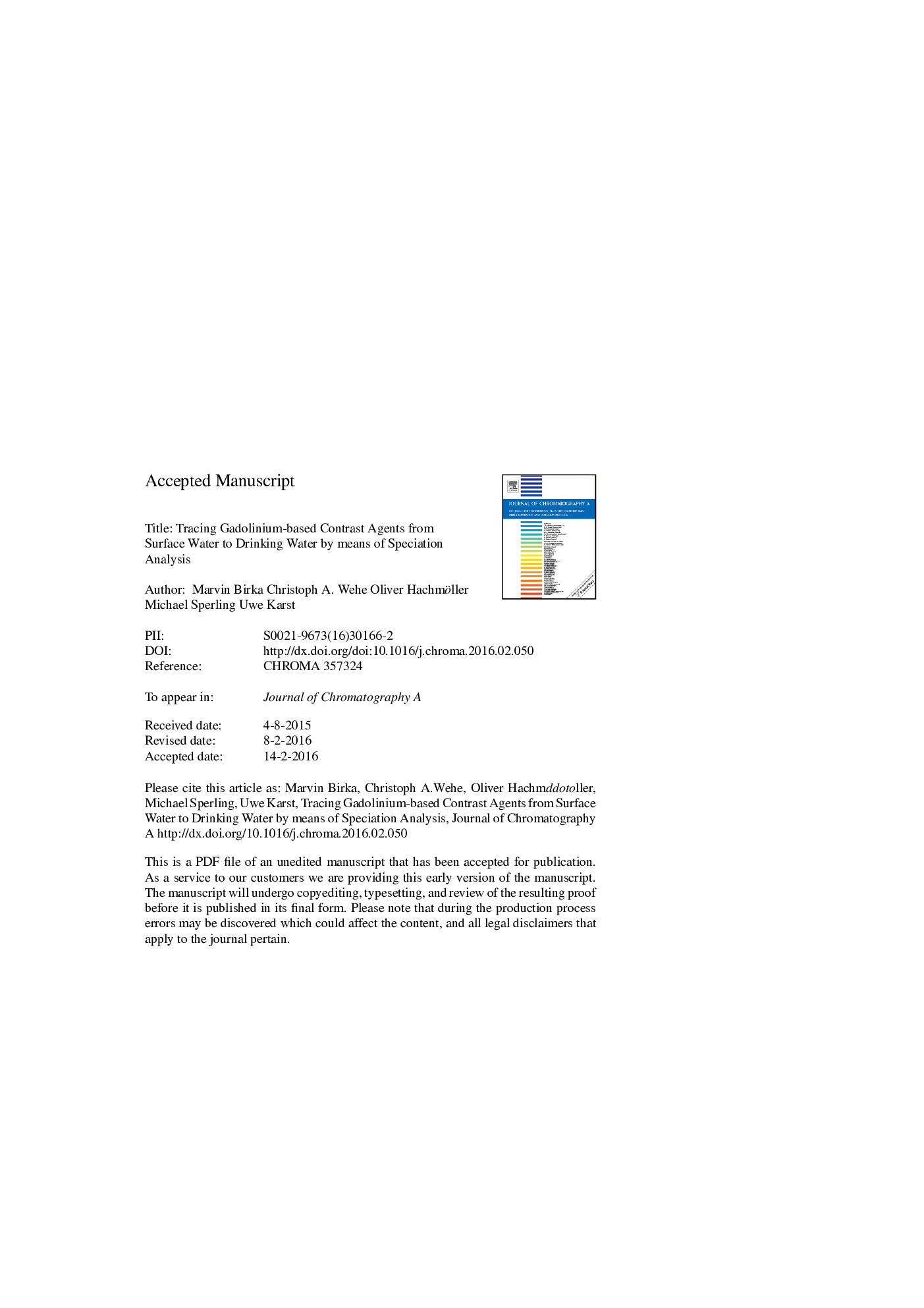| Article ID | Journal | Published Year | Pages | File Type |
|---|---|---|---|---|
| 7610111 | Journal of Chromatography A | 2016 | 29 Pages |
Abstract
In recent decades, a significant amount of anthropogenic gadolinium has been released into the environment as a result of the broad application of contrast agents for magnetic resonance imaging (MRI). Since this anthropogenic gadolinium anomaly has also been detected in drinking water, it has become necessary to investigate the possible effect of drinking water purification on these highly polar microcontaminats. Therefore, a novel highly sensitive method for speciation analysis of gadolinium is presented. For that purpose, the hyphenation of hydrophilic interaction liquid chromatography (HILIC) and inductively coupled plasma-mass spectrometry (ICP-MS) was employed. In order to enhance the detection power, sample introduction was carried out by ultrasonic nebulization. In combination with a novel HILIC method using a diol-based stationary phase, it was possible to achieve superior limits of detection for frequently applied gadolinium-based contrast agents below 20Â pmol/L. With this method, the contrast agents Gd-DTPA, Gd-DOTA and Gd-BT-DO3A were determined in concentrations up to 159Â pmol/L in samples from several waterworks in a densely populated region of Germany alongside the river Ruhr as well as from a waterworks near a catchment lake. Thereby, the direct impact of anthropogenic gadolinium species being present in the surface water on the amount of anthropogenic gadolinium in drinking water was shown. There was no evidence for the degradation of contrast agents, the release of Gd3+ or the presence of further Gd species.
Related Topics
Physical Sciences and Engineering
Chemistry
Analytical Chemistry
Authors
Marvin Birka, Christoph A. Wehe, Oliver Hachmöller, Michael Sperling, Uwe Karst,
